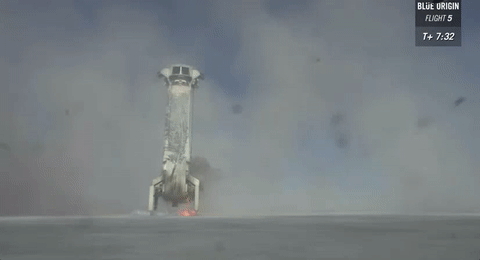Blue Origin Rocket Booster Survives Test Launch, Defies Odds
A triple success for today's launch

The reusable rocket booster that made history has survived to see another day. Blue Origin’s New Shepard booster, which became the first rocket to launch into suborbital space and then come back for a vertical landing in November 2015, was expected to explode in a test launch today. Instead, it made it to space and back again to nail its fifth vertical landing.
The purpose of the test was to try out a crew capsule escape system, which would eject the capsule (and any future astronaut inhabitants) out of the way of an exploding rocket during liftoff. The abort system fires a rocket motor to push away from a potentially dangerous booster with 70,000 pounds of force, like in this test from 2010:

In today’s launch, the force of that ejection was supposed to hit the rocket right at the most dangerous time of liftoff, when the rocket is breaking the sound barrier. In a blog post in September, Blue Origin CEO Jeff Bezos indicated that the force would likely cause the loss of the booster. Instead, the booster corrected its path and continued up to suborbital space.

Meanwhile, the abort system test appears to have gone off without a hitch, shooting away from the rocket and then deploying parachutes for a soft landing.

Finally, the booster came back for another smooth landing.

This was the final flight for this veteran booster, which has now gone to space and back five times. Since it didn’t go out in a blaze of glory, the rocket has earned itself a quiet retirement–preserved, like its SpaceX counterpart, for posterity.